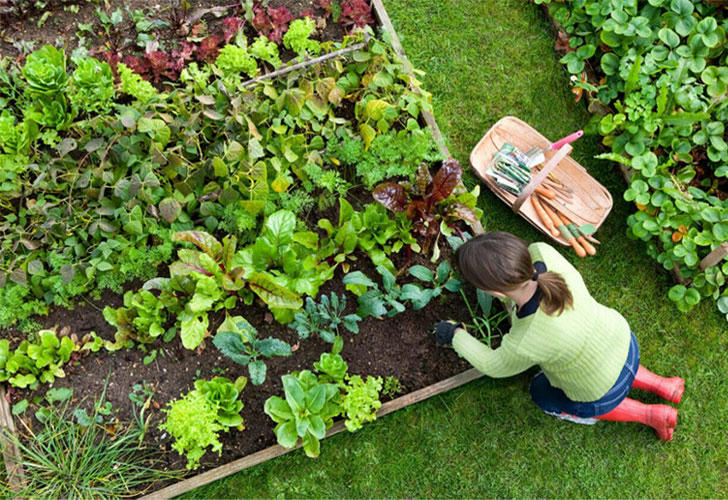6 Perfect Vegetables to Grow in the Spring Garden
When spring arrives, many gardening enthusiasts feel that burst of excitement to dig in the soil and start growing something fresh. But which vegetables should you plant to make the most of this season? In this comprehensive guide, we’ll walk you through the top spring vegetables to consider, along with helpful tips on soil preparation, plant care, and recommended gardening tools. By the time you’re done reading, you’ll be ready to cultivate a bountiful harvest—all while saving money and enjoying the great outdoors.

1. Why Spring Is the Perfect Time to Start Planting
Spring is often regarded as the prime season for planting vegetables because of the milder temperatures and increasing daylight hours. After the cold winter months, the soil begins to warm up, making it easier for seeds to germinate and for young plants to establish healthy root systems.
- Soil Temperatures
- Many spring vegetables thrive in soil temperatures between 50°F and 65°F. This range is warm enough to encourage root growth but not so hot that seeds dry out.
- Gentle Weather
- Spring rains provide a consistent water source, reducing the need for frequent watering.
- The moderate weather also lowers the risk of scorching young seedlings.
- Longer Days
- As spring progresses, days become longer, giving your plants more sunlight. This extra daylight translates into better photosynthesis and faster growth.
If you start planting early in spring, you can enjoy a harvest that lasts well into summer—and, in some cases, beyond!
2. Top Spring Vegetables to Plant
Let’s dive into some popular vegetables that thrive in spring. We’ll also highlight each plant’s general growing conditions, so you know exactly what to expect.
2.1 Lettuce
- Why Plant: Lettuce is perfect for spring because it loves cool temperatures and can be harvested multiple times if you trim just the leaves.
- Varieties: Romaine, Butterhead, Loose-Leaf, and Crisphead.
- Pro Tip: Plant lettuce in partial shade to extend its growing season and prevent it from bolting (going to seed) too quickly.
2.2 Spinach
- Why Plant: Spinach is nutrient-dense and thrives in mild conditions.
- Varieties: Savoy, Semi-Savoy, and Smooth-Leaf.
- Pro Tip: Keep the soil consistently moist but not waterlogged. Spinach loves fertile, well-drained soil.
2.3 Radishes
- Why Plant: If you want instant gratification, radishes are the way to go. They can mature in as little as 25 days.
- Varieties: Cherry Belle, French Breakfast, and Daikon (if you have more space).
- Pro Tip: Harvest promptly to avoid them becoming woody or too spicy.
2.4 Peas
- Why Plant: Peas love the cool spring weather and will reward you with sweet, plump pods.
- Varieties: Snap peas, Snow peas, and Shelling peas.
- Pro Tip: Use a trellis or veggie rack to help peas climb, improving air circulation and making them easier to harvest.
2.5 Carrots
- Why Plant: Carrots are a root crop that can handle cool spring temperatures, developing sweet flavor as they grow.
- Varieties: Nantes, Danvers, and Chantenay.
- Pro Tip: Loosen the soil well before planting to allow roots to grow straight and long.
2.6 Broccoli
- Why Plant: Broccoli loves mild, cooler temps, making spring an ideal time to plant.
- Varieties: Calabrese, Sprouting Broccoli, and Broccolini.
- Pro Tip: Harvest heads when they’re still tight and before the yellow flowers appear for the best taste.
3. Soil Preparation for a Successful Spring Garden
3.1 Testing Your Soil
A simple soil test can reveal pH levels, nutrient deficiencies, and other issues. You can buy an at-home soil test kit or send a sample to a local extension office.
3.2 Adding Compost and Organic Matter
- Compost: Enriches the soil with nutrients and beneficial microbes.
- Manure: Make sure it’s well-aged to avoid burning plants.
- Mulch: Helps retain moisture and keeps weeds at bay.
3.3 Tools of the Trade
- Seedling Starter Kits: For those who want to start seeds indoors.
- Hand Trowels: Perfect for small digging tasks and transplanting.
- Garden Fork: Helps in aerating the soil and mixing in compost.
- Sowing Tools: Tools with depth markers can ensure your seeds are planted at the right depth.
4. Weed Control and Maintenance
4.1 Regular Weeding
Weeds compete with your vegetables for water, sunlight, and nutrients. Remove them early and often to keep your garden bed healthy.
- Hand Weeding: Best for small gardens or tight spaces.
- Hoe or Weeder: Ideal for larger areas and surface-level weed removal.
4.2 Watering
Most spring vegetables require about 1 inch of water per week, depending on rainfall. Water deeply rather than giving your plants small, frequent sips.
- Drip Irrigation: Conserves water and keeps leaves dry, reducing fungal diseases.
- Soaker Hoses: Delivers water directly to the root zone.
4.3 Fertilizing
- Balanced Fertilizer: Look for an N-P-K ratio (Nitrogen, Phosphorus, Potassium) suited to your chosen crops.
- Slow-Release Options: Provide a steady nutrient supply over time.
- Compost Tea: A natural way to boost microbial life and enrich the soil.
5. Building Support Structures
Some vegetables, like peas and beans, need support to grow upward. This not only saves space but also improves air circulation, reducing disease risk.
- Trellises: Ideal for peas, beans, and cucumbers.
- Vegetable Racks: Handy for vertical gardening, especially in smaller yards.
- Stakes & Cages: Commonly used for tomatoes and peppers.
Conclusion
Spring is the perfect opportunity to breathe life into your garden with a variety of vegetables that thrive in cooler temperatures. From quick-growing radishes to nutrient-packed spinach, there’s a world of possibility just waiting in your backyard. By focusing on soil preparation, proper watering, weed control, and support structures, you’ll set the stage for a bountiful harvest that will carry you well into the warmer months.
Here’s to a vibrant, delicious spring harvest—one that will make you wonder why you ever bothered buying produce from the grocery store in the first place!
